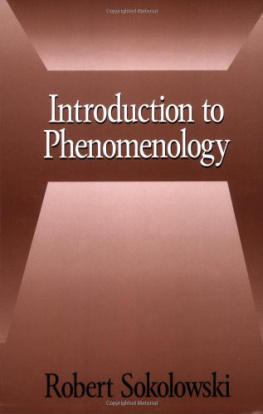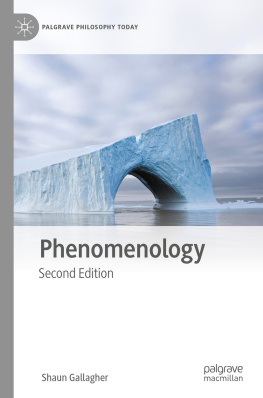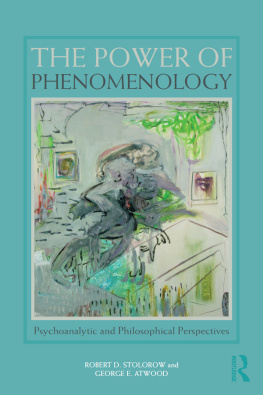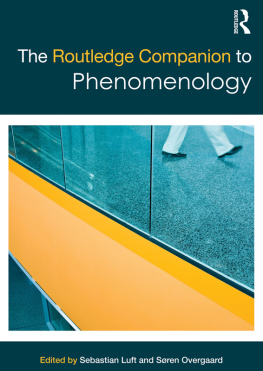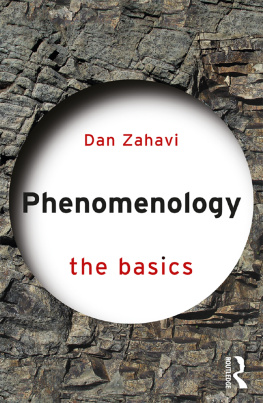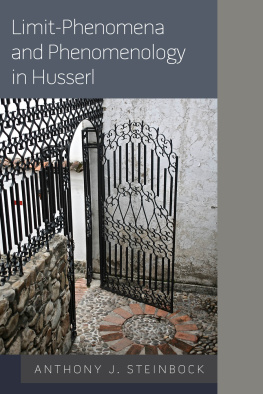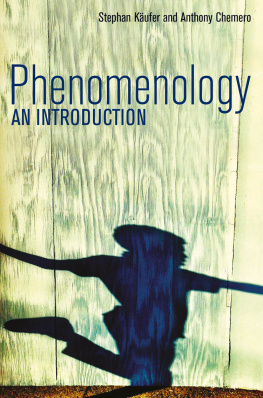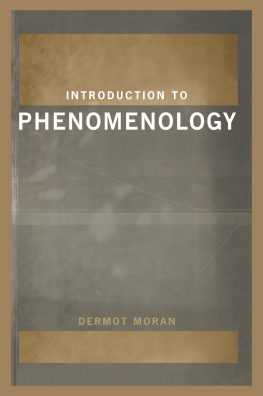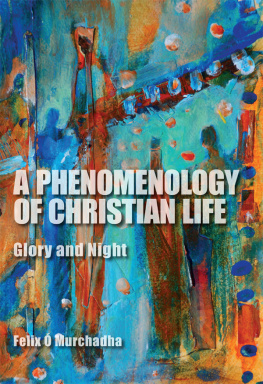Acknowledgments
I am indebted to the late Gian-Carlo Rota for suggesting the topic of this book to me, and for his encouragement and help as the writing progressed. In the Introduction I describe how the concept of the book arose in a conversation between us. The fact that I cannot share the completed work with him is only one of the many sorrows caused by his recent, sudden death.
Many friends and colleagues have commented on earlier drafts of the manuscript, and in several places I have used not only their ideas, but also their formulations. I am grateful to John Brough, Richard Cobb-Stevens, John Drummond, James Hart, Richard Hassing, Piet Hut, John Smolko, Robert Tragesser, and Kevin White. John McCarthy was particularly generous with his remarks. I used an earlier version of this work as the basis for a course at The Catholic University of America, and I am grateful for the response and suggestions of the students who participated in it. Some of Amy Singer's phrases were especially useful. Finally, I am much obliged to Francis Slade for thoughts and formulations that I used throughout the book, especially for his ideas about modernity, which I relied on for the material in the final chapter.
This book is dedicated to Brother Owen J. Sadlier, O.S.F., whose generosity and philosophical judgment have meant so much to those who are fortunate to be his friends.
Appendix
Phenomenology in the Last One Hundred Years
THE BEGINNINGS OF THE MOVEMENT: HUSSERL
The phenomenological movement fits very neatly, almost exactly, into the twentieth century. The work that is generally considered to be the first true phenomenological work, Edmund Husserl's Logical Investigations, appeared in two parts in the years 1900 and 1901, so the new movement began precisely with the dawning of the century. Moreover, this date was literally a new beginning, because Husserl was so truly an original philosopher. He cannot be considered as continuing a tradition that had taken shape before him; even Martin Heidegger, as strong a philosopher as he was, can be understood only in the tradition opened up by Husserl, but Husserl did not have any such overshadowing predecessors. He drew on the work of Franz Brentano and the psychologist Carl Stumpf, but he greatly exceeded them. His theory of intentionality, for example, is far superior to that of Brentano. Husserl's written work before 1900 (his Philosophy of Arithmetic, which appeared in 1891, and the few essays that followed the book), although it foreshadows some of his later thought, is justly considered to be prephenomenological, in the way that Kant's writings before the Inaugural Dissertation of 1770 are taken to be precritical. So now, as we stand at the end of the twentieth century, we can look back at the philosophical movement that began in the year 1900 and attempt to survey it.
Husserl had been a Privatdozent at the University of Halle for fourteen years when, because of the success of Logical Investigations, he was invited to become professor at Gttingen. He was at Gttingen from 1901 to 1916, when he moved to Freiburg, where he taught from 1916 to his retirement in 1928. He remained at Freiburg another ten years until his death in 1938 at the age of seventynine. Husserl published only six books during his lifetime: Philosophy of Arithmetic (1891), Logical Investigations (1900-1), Ideas I (1913), Lectures on Internal Time-Consciousness (1928), Formal and Transcendental Logic (1929), and Cartesian Meditations (1931), which appeared in French. However, he composed thousands of pages of manuscripts: course lectures, philosophical sketches and meditations, commentaries, drafts for possible publication; he philosophized by writing. All these materials were collected in the Husserl Archives, and many volumes were published posthumously in the series Husserliana, which now numbers twenty-nine titles and is still counting. A total of about forty volumes is planned.
Elisabeth Strker (personal communication) has observed that Husserl always remained something of a natural scientist even when he turned to philosophy; he had begun his studies and written his doctoral thesis in mathematics, and also studied astronomy and psychology before entering philosophy. As a natural scientist, he was, Strker says, more inclined to the experiment than to the monograph, and his many philosophical compositions were like so many empirical studies or experiments. Even his larger books were more like collections of small studies rather than architectonically structured compositions.
Through his teaching and writings, Husserl stimulated the growth of several branches of phenomenology during his lifetime. Another important way in which he exercised influence was through his editorial work on the Jahrbuch fr Philosophie und phnomenologische Forschung, which he founded in 1913. Many important German monographs appeared in that yearbook, including Heidegger's Being and Time, Husserl's own Ideas I and Formal and Transcendental Logic, Max Scheler's Formalism in Ethics, and works by Adolf Reinach, Alexander Pfnder, Oskar Becker, and Moritz Geiger. A total of eleven volumes, some of which contained more than one work, were published in this series between 1913 and 1930. The last was a study by Eugen Fink entitled Vergegenwrtigung und Bild (Representation and image).
Two philosophical groups were influenced by Husserl during his teaching period, one at Gttingen and one at Munich. The one at Munich arose spontaneously through the reading of Logical Investigations. At the University of Munich, students of Theodor Lipps had organized a philosophical group around the turn of the century; the group, including such figures as Alexander Pfnder and Johannes Daubert at the beginning, and later Adolf Reinach, Theodor Conrad, Hedwig Conrad-Martius, Moritz Geiger, Dietrich von Hildebrand, and Max Scheler, was influenced by Husserl's written work and gradually became an independent center of phenomenology. Members met frequently with Husserl at Gttingen, they invited him to lecture at Munich, and some transferred to Gttingen to study with him. What interested the Munich philosophers was Husserl's overcoming of psychologism and his restoration of realism in philosophy. They disliked his later development of a transcendental philosophy, however, thinking it to be a relapse into idealism, and they thought of their own work as phenomenology without the reduction. At Gttingen, subsequently, another group was formed. Some of its members came from Munich, such as Reinach, Daubert, Conrad, Conrad-Martius, and von Hildebrand, and they were joined by such figures as Alexandre Koyre and Jean Hering. Roman Ingarden and Edith Stein became members of this group and later went with Husserl to Freiburg.
When Husserl moved to the University of Freiburg in 1916, no formal circle of phenomenology was established there, but many prominent figures worked with him: Stein, Ingarden, Fink, Ludwig Landgrebe, and especially Martin Heidegger. Others who were influenced by him while studying elsewhere in the 1920s were Jacob Klein and Hans-Georg Gadamer, who were at Marburg and were more directly influenced by Heidegger.
THE SECOND STAGE: HUSSERL, HEIDEGGER AND SCHELER
During the 1920s Husserl's philosophical movement, as a cultural phenomenon, was somewhat derailed by the appearance of Martin Heidegger on the academic and intellectual scene. Heidegger made a tremendous impression on the philosophical world in Germany and stole Husserl's thunder. Husserl and Heidegger form one of the great pairs of thinkers in the history of philosophy, and to understand their relationship let us move back a few years to 1907, when Heidegger read Brentano's book on the many senses of being in Aristotle. Two years later as a student at Freiburg he read Husserl's

